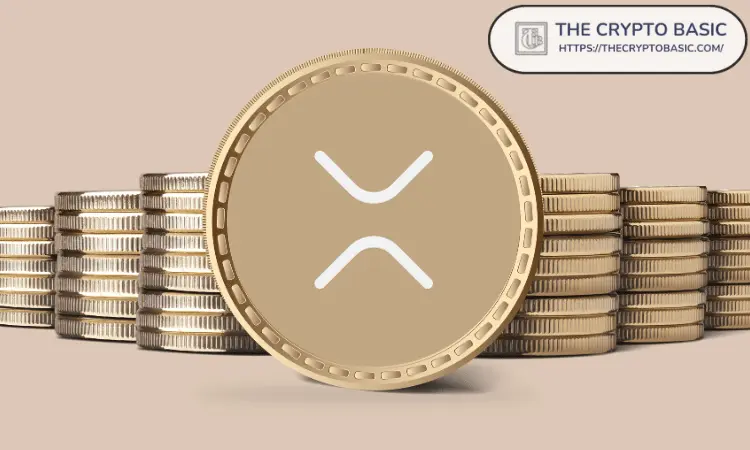XRP’s potential valuation hinges on its adoption for cross-border payments and its role in banking liquidity. Different adoption scenarios, from capturing SWIFT volume to serving as a liquidity reserve, yield a wide range of price targets.
What to Know:
- XRP’s potential valuation hinges on its adoption for cross-border payments and its role in banking liquidity.
- Different adoption scenarios, from capturing SWIFT volume to serving as a liquidity reserve, yield a wide range of price targets.
- XRP’s velocity, or how frequently tokens are reused, is a crucial factor influencing its price under each model.
XRP continues to garner attention as Ripple expands its technology and global footprint, fueling speculation about its potential role in cross-border payments. For institutional investors, understanding XRP’s valuation models under different adoption scenarios is crucial. By examining potential market capture, total cross-border payments, and liquidity reserve models, we can assess XRP’s potential value and its implications for portfolio strategy.
Market Capture Model
The most optimistic scenario envisions XRP capturing a significant portion of SWIFT’s annual transaction volume, estimated at $150 trillion. If XRP were to handle 10% of this volume, it would necessitate approximately $5 trillion worth of XRP in circulation. Dividing this figure by the circulating supply of roughly 60 billion tokens yields a price of around $83.33 per XRP. Such a valuation would position XRP as a major player in global banking flows, potentially attracting substantial institutional investment. However, achieving this level of market penetration requires overcoming regulatory hurdles and establishing trust among financial institutions.
Total Cross-Border Payments Model
Expanding beyond SWIFT, a broader model considers the entire cross-border payments industry, encompassing remittances, business transfers, settlement flows, and consumer transactions, estimated at $200 trillion annually. If XRP were to process 5% of this market, it would require around $2 trillion in XRP liquidity, resulting in a price of approximately $33.33 per XRP. This scenario reflects a more comprehensive integration of XRP into the global financial system, potentially driven by its efficiency and lower transaction costs compared to traditional methods. Institutional interest would likely surge as XRP demonstrates its ability to facilitate seamless cross-border transactions.
Liquidity Reserve Model
A more conservative approach focuses on banks holding XRP as part of their liquidity reserve structure rather than transaction flow. If 1,000 major banks each held $500 million in XRP, the combined liquidity pool would total $500 billion. This scenario places XRP’s price near $8.33. While this model yields a lower valuation compared to the previous ones, it represents a more realistic assessment of XRP’s initial adoption phase. As banks gradually integrate XRP into their liquidity management strategies, institutional demand could steadily increase, laying the foundation for future growth.
The Velocity Factor
The key determinant in all these scenarios is XRP’s velocity, which measures how frequently the same tokens can be reused within the system. Higher velocity reduces the amount of XRP locked in liquidity, exerting downward pressure on price. Conversely, lower velocity increases demand for locked XRP, driving prices upward. The interplay between adoption levels and velocity will ultimately shape XRP’s valuation. Institutional investors must closely monitor XRP’s velocity to gauge its price trajectory and make informed investment decisions.
Regulatory Considerations and Market Sentiment
Regulatory clarity remains a critical factor influencing XRP’s adoption and valuation. Favorable regulatory developments could boost institutional confidence and accelerate XRP’s integration into the financial system. Conversely, adverse regulatory actions could hinder its growth and dampen investor sentiment. Market sentiment, driven by news events, technological advancements, and broader economic conditions, also plays a significant role in shaping XRP’s price dynamics. Institutional investors must carefully assess the regulatory landscape and market sentiment to navigate the uncertainties surrounding XRP.
Historical Parallels and Future Outlook
Drawing parallels to previous market events, such as the launch of Bitcoin ETFs, can provide insights into XRP’s potential trajectory. The introduction of Bitcoin ETFs legitimized Bitcoin as an asset class and attracted significant institutional investment. Similarly, the development of XRP-based financial products and services could enhance its appeal to institutional investors. While challenges remain, XRP’s potential to disrupt the cross-border payments industry and transform banking liquidity structures positions it as a compelling asset for institutional consideration.
In conclusion, XRP’s valuation hinges on its adoption for cross-border payments and its role in banking liquidity. Different adoption scenarios yield a wide range of price targets, with XRP’s velocity serving as a crucial factor influencing its price under each model. Institutional investors must carefully assess these factors, along with regulatory considerations and market sentiment, to make informed investment decisions regarding XRP.
Related: XRP Price: $12M Max Pain for Bears
Source: Original article
Quick Summary
XRP’s potential valuation hinges on its adoption for cross-border payments and its role in banking liquidity. Different adoption scenarios, from capturing SWIFT volume to serving as a liquidity reserve, yield a wide range of price targets.
Source
Information sourced from official Ripple publications, institutional research, regulatory documentation and reputable crypto news outlets.
Author
Ripple Van Winkle is a cryptocurrency analyst and founder of XRP Right Now. He has been active in the crypto space for over 8 years and has generated more than 25 million views across YouTube covering XRP daily.
Editorial Note
Opinions are the author's alone and for informational purposes only. This publication does not provide investment advice.



